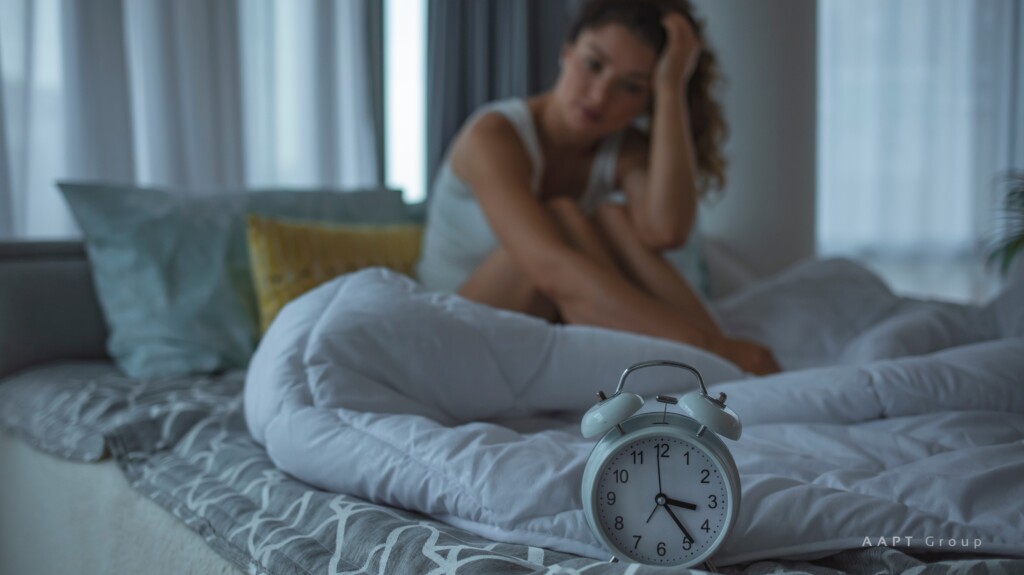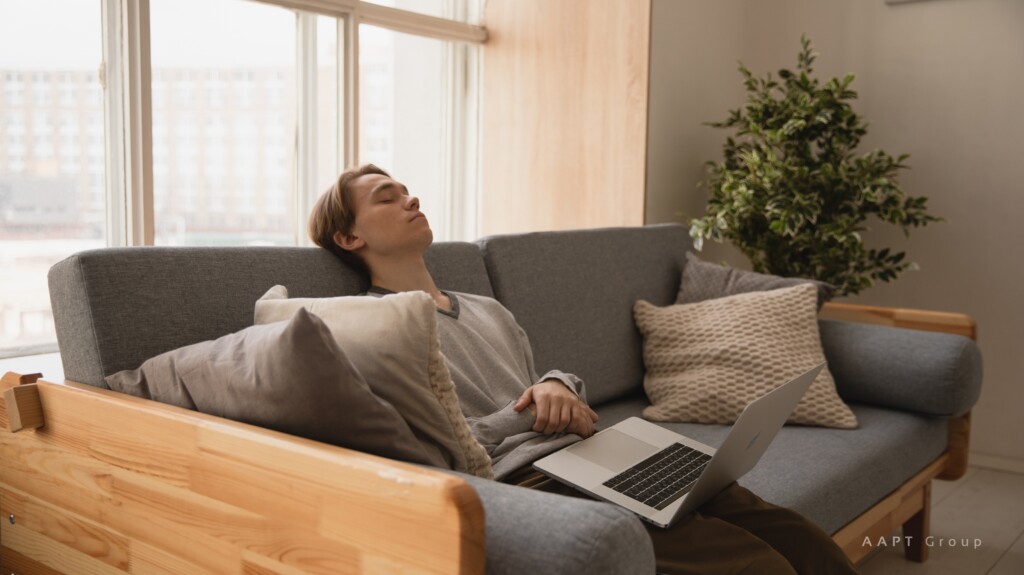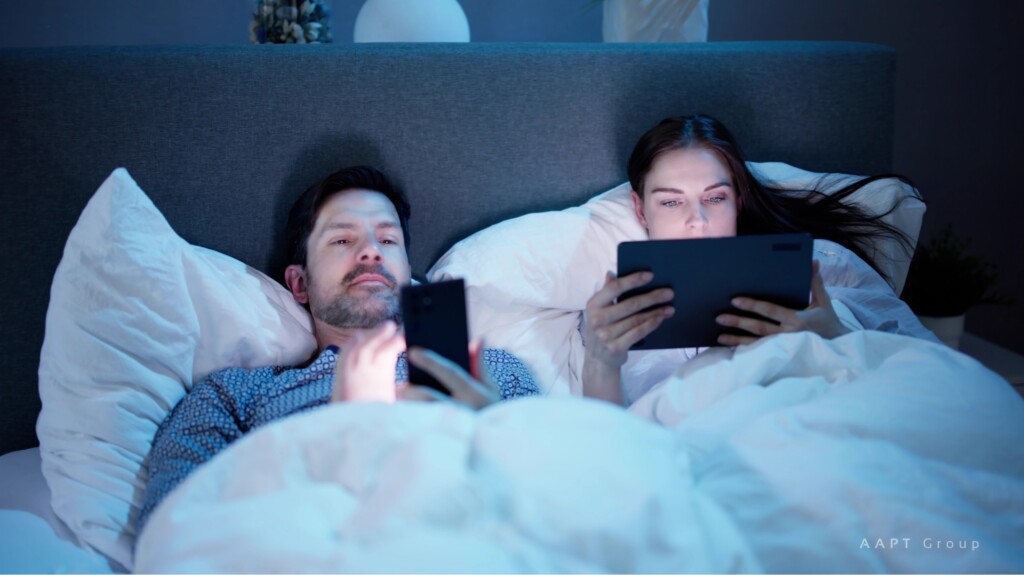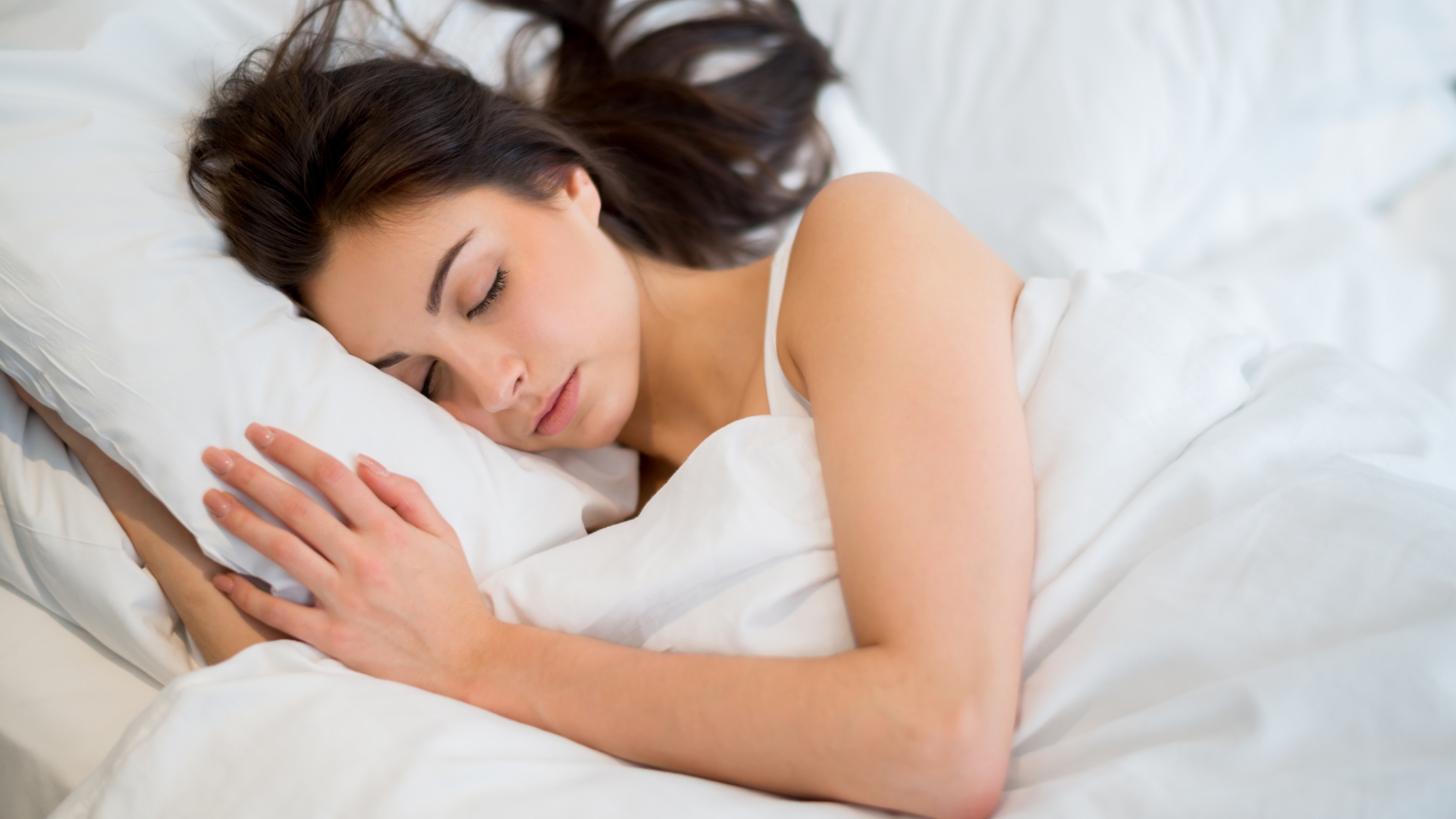Sleep paralysis is a temporary inability to move or speak that occurs when falling asleep or waking up. During this phenomenon, the brain is awake, but the body remains in a state of muscle atonia, preventing physical movement. It may be accompanied by vivid hallucinations or a sense of pressure on the chest. Sleep paralysis is a normal part of the sleep cycle but can be unsettling. Factors such as irregular sleep patterns, sleep deprivation, or certain sleep disorders can increase the likelihood of experiencing sleep paralysis, though it is generally harmless and not indicative of a serious medical condition.
Factors That Cause Sleep Paralysis

Sleep paralysis is often associated with disruptions in the normal sleep-wake cycle and can be influenced by various factors and hence to manage sleep paralysis we need to understand the core causes behind it.
Here are some common factors that may contribute to sleep paralysis:
1. Irregular Sleep Patterns
Inconsistent sleep schedules or irregular sleep patterns, such as frequent changes in sleep-wake times, can disrupt the normal progression of sleep stages and increase the likelihood of experiencing sleep paralysis.
2. Sleep Deprivation
Insufficient or poor-quality sleep, whether due to chronic sleep deprivation or conditions like insomnia, can make individuals more susceptible to sleep paralysis.
3. Sleep Disorders
Certain sleep disorders, including narcolepsy, sleep apnea, and insomnia, are associated with disruptions in sleep architecture and an increased risk of sleep paralysis.
4. Sleeping on Your Back
Sleeping in the supine position (on your back) has been linked to a higher incidence of sleep paralysis episodes. Changing sleep positions may reduce the frequency of occurrences.
5. Hypnagogic or Hypnopompic Hallucinations
Vivid hallucinations during the transition between wakefulness and sleep (hypnagogic) or sleep and wakefulness (hypnopompic) are common during sleep paralysis episodes.
6. Stress and Anxiety:
Emotional stress, anxiety, and other mental health factors can contribute to sleep disturbances and increase the likelihood of experiencing sleep paralysis.
7. Sleeping in New Environments
Changes in the sleeping environment, such as staying in a new place or sleeping in an unfamiliar bed, may disrupt the usual sleep routine and trigger sleep paralysis in some individuals.
8. Sleeping Disorders Associated with REM Sleep
Rapid Eye Movement (REM) sleep-related disorders, such as REM sleep behavior disorder (RBD), can be linked to sleep paralysis. These conditions involve the absence of normal muscle atonia during REM sleep.
9. Family History
Before trying to manage sleep paralysis, one should know there may be a genetic predisposition to sleep paralysis. If other family members have experienced it, an individual might be more likely to experience it as well.
10. Substance Use
Certain substances, such as alcohol or recreational drugs, can affect sleep patterns and increase the likelihood of sleep paralysis.
It’s important to note that while these factors are associated with sleep paralysis, not everyone who experiences these conditions or engages in these behaviours will necessarily have episodes of sleep paralysis. If someone is experiencing frequent or distressing sleep paralysis episodes, it’s advisable to consult with a healthcare professional or a sleep specialist for further evaluation and guidance.
Recommended:
- Surprising Health Benefits of Sleeping Without Pillows
- 10 Great Benefits of Sleeping Naked
- Know What is The Best Time to Sleep and Wake Up
Signs of Sleep Paralysis

Sleep paralysis is characterized by a temporary inability to move or speak during the transition between wakefulness and sleep.
Common signs and symptoms of sleep paralysis include:
1. Inability to Move:
A temporary paralysis or inability to move the body, often lasting a few seconds to a couple of minutes. This occurs despite being conscious and aware of the surroundings.
2. Inability to Speak:
During an episode of sleep paralysis, individuals may find it difficult or impossible to speak or make vocalizations.
3. Feeling of Pressure on the Chest:
Some people report a sensation of pressure on the chest, as if an external force is weighing down on them. This sensation can contribute to a feeling of breathlessness.
4. Hallucinations:
Vivid visual or auditory hallucinations may accompany sleep paralysis. These hallucinations can be frightening and may involve the perception of intruders, shadows, or other surreal experiences.
5. Sensation of Floating or Drifting:
Some individuals may feel as though they are floating, drifting, or moving through space during sleep paralysis episodes.
6. Fear or Panic:
Many people experience intense fear or panic during sleep paralysis, particularly due to the combination of paralysis and vivid hallucinations.
7. Rapid Breathing or Hyperventilation:
An increased respiratory rate or hyperventilation may occur, especially if the individual is attempting to overcome the feeling of breathlessness.
8. Awareness of the Room:
Despite the inability to move, individuals are often aware of their surroundings. This awareness can contribute to a sense of helplessness.
9. Difficulty Opening the Eyes:
Some individuals may find it challenging to open their eyes during sleep paralysis. This can further contribute to a sense of being trapped or immobilized.
10. Recurrent Episodes:
Sleep paralysis episodes can be isolated occurrences, but for some individuals, they may happen repeatedly over time.
It’s important to note that while sleep paralysis can be a frightening experience, it is generally harmless, and episodes do not cause physical harm. To manage sleep paralysis it is crucial to know the factors such as stress, irregular sleep patterns, and sleep disorders can contribute to the likelihood of experiencing sleep paralysis. If someone experiences frequent or distressing episodes of sleep paralysis, it’s advisable to consult with a healthcare professional or a sleep specialist for further evaluation and guidance.
Interesting Facts About Sleep Paralysis

Sleep paralysis is a fascinating phenomenon that has intrigued scientists, psychologists, and cultural storytellers throughout history.
Here are some interesting facts about sleep paralysis:
1. Cultural Interpretations:
Across different cultures, sleep paralysis has been explained through various supernatural beliefs. In some cultures, it’s attributed to demonic entities or malevolent spirits sitting on the sleeper’s chest.
2. Old Hag Syndrome:
In some cultures, sleep paralysis is associated with the “Old Hag” or “Night Hag” phenomenon, where individuals report seeing a frightening old woman or witch during episodes.
3. Brain’s Safety Mechanism:
Sleep paralysis is considered a normal part of the sleep cycle. During Rapid Eye Movement (REM) sleep, the brain inhibits voluntary muscle activity to prevent individuals from acting out their dreams and potentially causing injury.
4. Hallucinations are Common:
Hallucinations during sleep paralysis can be vivid and realistic. People may report seeing, hearing, or feeling things that aren’t actually present, contributing to the often frightening nature of the experience.
5. Prevalence:
It is estimated that about 8% of the general population experiences at least one episode of sleep paralysis in their lifetime. Some individuals may experience it more frequently.
6. Connection to Lucid Dreaming:
Sleep paralysis is sometimes linked to lucid dreaming, where individuals become aware that they are dreaming and may experience a sense of control over their dream environment.
7. Genetic Factors:
There may be a genetic component to sleep paralysis. If a family member experiences it, there might be a higher likelihood of others in the family also having episodes.
8. Increased Likelihood in Certain Groups:
Sleep paralysis is more common in individuals with sleep disorders such as narcolepsy. It is also more prevalent in students, individuals with irregular sleep schedules, and those with a history of anxiety or depression.
9. Scientific Exploration:
Researchers have studied to manage sleep paralysis one needs to better understand the brain’s mechanisms during the transition between wakefulness and sleep. It provides insights into the complex interplay of neurotransmitters and brain regions involved in sleep.
10. Treatment Approaches:
While there is no specific medication for sleep paralysis, improving sleep hygiene, addressing underlying sleep disorders, and managing stress can help reduce the frequency of episodes.
11. Rapid Eye Movements (REM):
Sleep paralysis most often occurs during the REM stage of sleep. During this stage, the brain is highly active, and vivid dreaming occurs.
12. Artistic and Literary Influence:
Sleep paralysis has inspired artistic works, literature, and films. Many artists and writers have depicted the eerie and surreal experiences associated with sleep paralysis in their creations.
Despite its intriguing nature, sleep paralysis is generally harmless. Understanding its scientific basis and cultural context can help individuals cope with and demystify this unique aspect of the sleep cycle. If someone experiences frequent or distressing sleep paralysis episodes, consulting with a healthcare professional or sleep specialist is recommended.
Risks Associated with Sleep Paralysis

Sleep paralysis itself is generally considered a harmless phenomenon, but it can be associated with certain risks or negative impacts, especially if it occurs frequently or leads to significant distress. Here are some potential risks and associated concerns:
1. Disruption of Sleep Quality:
Sleep paralysis can disrupt the normal sleep-wake cycle and lead to fragmented sleep. This may result in feelings of fatigue, daytime sleepiness, and impaired overall sleep quality.
2. Impact on Mental Health:
Frequent or distressing episodes of sleep paralysis can contribute to increased anxiety, stress, and fear of sleep. Over time, this psychological impact may affect an individual’s mental well-being.
3. Daytime Dysfunction:
Persistent sleep disturbances, including sleep paralysis, can contribute to impaired daytime functioning. Individuals may experience difficulty concentrating, decreased alertness, and performance deficits in daily activities.
4. Association with Sleep Disorders:
Sleep paralysis is sometimes associated with other sleep disorders, such as narcolepsy. Individuals experiencing sleep paralysis along with symptoms like excessive daytime sleepiness may benefit from a comprehensive sleep evaluation.
5. Hallucinations and Fear:
The vivid hallucinations often accompanying sleep paralysis episodes can be frightening. Fear of these experiences may lead to heightened stress levels and anticipatory anxiety about going to sleep.
6. Impact on Sleep Hygiene:
Individuals experiencing sleep paralysis may develop poor sleep hygiene habits, such as irregular sleep schedules or avoiding certain sleep positions, in an attempt to prevent episodes. This can further disrupt overall sleep quality.
7. Relationship with Other Medical Conditions:
Sleep paralysis has been reported in association with certain medical conditions, including migraine, anxiety disorders, and post-traumatic stress disorder (PTSD). Addressing underlying health issues may help manage sleep paralysis.
8. Physical Symptoms:
Some individuals may experience physical symptoms during sleep paralysis, such as a sensation of pressure on the chest or difficulty breathing. While these sensations are typically transient, they can be distressing in the moment.
9. Impact on Daily Functioning:
Severe sleep paralysis episodes may result in temporary immobilization, affecting an individual’s ability to perform daily tasks. This can be particularly concerning if it occurs during activities that require immediate responsiveness.
It’s important to note that to manage sleep paralysis, this condition itself is not a medical emergency, persistent or severe episodes should be discussed with a healthcare professional. Addressing any underlying sleep disorders, managing stress, and adopting healthy sleep habits are key strategies to mitigate the impact of sleep paralysis and improve overall sleep quality. Individuals experiencing significant distress or impairment should seek guidance from a healthcare provider or sleep specialist for appropriate evaluation and management.
Ways to Manage Sleep Paralysis

While sleep paralysis itself may not always be preventable, there are several strategies that individuals can try to manage and reduce the frequency of episodes.
Here are some tips to help cope with sleep paralysis:
1. Improve Sleep Hygiene:
Establish a regular sleep schedule by going to bed and waking up at the same time each day, even on weekends. Create a comfortable sleep environment, ensuring the bedroom is dark, quiet, and cool.
2. Reduce Stress:
Practice stress-reducing techniques such as meditation, deep breathing exercises, or progressive muscle relaxation. Managing stress can contribute to better overall sleep quality.
3. Create a Relaxing Bedtime Routine:
Develop a calming routine before bedtime to signal to your body that it’s time to wind down. Avoid stimulating activities or screens at least an hour before sleep.
4. Sleep on Your Side:
Sleeping on your back has been associated with a higher risk of sleep paralysis. Try sleeping on your side to see if it reduces the likelihood of episodes.
5. Address Underlying Sleep Disorders:
If sleep disorders such as insomnia or sleep apnea are present, seek treatment. Managing underlying sleep issues can contribute to better sleep quality and may reduce the occurrence of sleep paralysis.
6. Improve Sleep Position:
Experiment with different sleep positions to find one that minimizes the occurrence of sleep paralysis. Some individuals find relief by avoiding sleeping on their back.
7. Limit Caffeine and Stimulants:
Reduce or eliminate the consumption of caffeine and other stimulants, especially in the hours leading up to bedtime.
8. Regular Exercise:
Engage in regular physical activity, but try to complete exercise sessions several hours before bedtime. Regular exercise is associated with better sleep quality.
9. Seek Professional Help:
If sleep paralysis episodes are persistent, distressing, or significantly impacting daily life, consider consulting with a healthcare professional or sleep specialist for further evaluation and guidance.
10. Maintain a Sleep Journal:
Keep a sleep journal to track sleep patterns, episodes of sleep paralysis, and any potential triggers or patterns. This information can be helpful when discussing your symptoms with a healthcare provider.
11. Use Relaxation Techniques:
Incorporate relaxation techniques, such as guided imagery or progressive muscle relaxation, into your bedtime routine to promote a calm and restful sleep.
12. Positive Mindset:
Develop a positive mindset about sleep. If you anticipate sleep paralysis, remind yourself that it is a normal part of the sleep cycle and is generally harmless. Reducing anxiety about sleep can contribute to a more relaxed bedtime experience.
It’s important to note that while these strategies may help manage sleep paralysis for some individuals, the effectiveness can vary. If sleep paralysis persists or causes significant distress, seeking professional advice is advisable for a thorough evaluation and appropriate guidance.
You may like this

